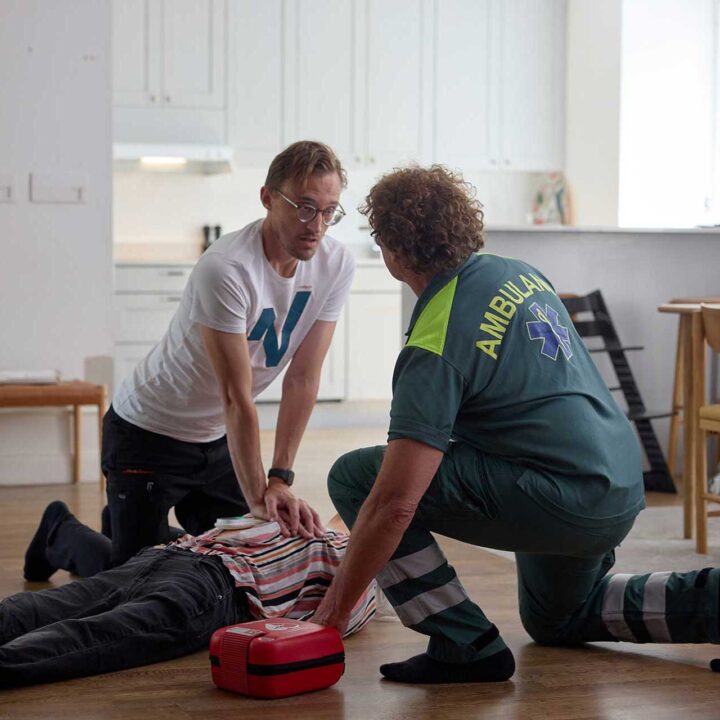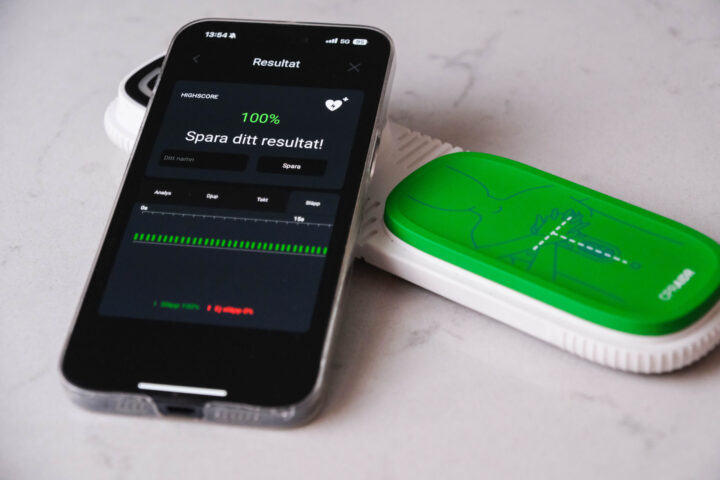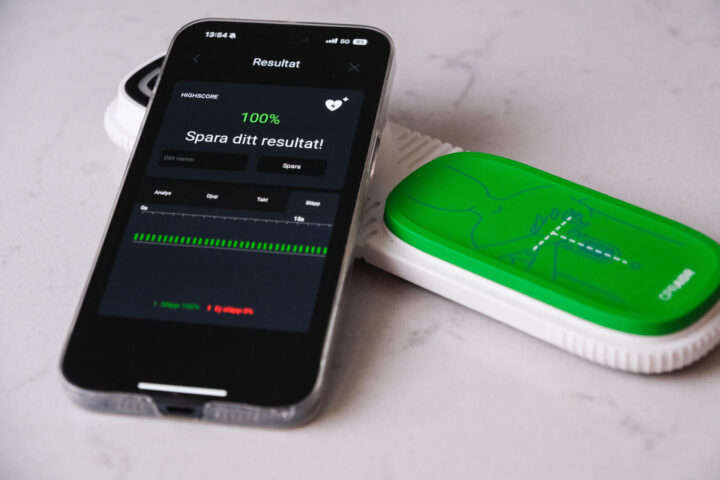From "Does digital support increase the willingness and confidence to save lives in cardiac arrest?"
by Agnes Dahlberg Svensson & Maria Sener
Introduction: This report explores how digital support can play a key role in increasing both the confidence and willingness of bystanders to intervene with CPR (cardiopulmonary resuscitation) in an out-of-hospital emergency. Cardiac arrest, which occurs when a blood clot blocks the coronary arteries of the heart, can lead to cardiac standstill. Approximately ten thousand people suffer from sudden cardiac arrest in Sweden each year, and the chance of survival outside a hospital is only ten percent. Stress and panic among bystanders can worsen the situation, and even experienced healthcare providers may experience uncertainty.
Research question: The research question focuses on how VitalSigns AB's CPR guide affects the confidence and willingness to intervene in an emergency that requires CPR. The study is geographically limited to Stockholm, Sweden, and demographically to adults over 18 years of age without formal or academic training in healthcare.
Method: A qualitative and quantitative method is used, consisting of surveys, semi-structured interviews, and observations. The collected results have contributed to a deeper understanding of how smart devices can function as support tools in cases of cardiac arrest and how people's attitudes and knowledge affect their preparedness to intervene.
The sample consisted of 15 test participants. Participants were selected through a combination of convenience sampling and snowball sampling to create a varied and representative participant group.
The results show that the majority of participants expressed a willingness to intervene in an emergency with CPR, even though they felt uncertain about how to act in practice. They indicated that when other, more competent individuals are present, it can reduce their inclination to intervene. Additionally, certain factors, such as the relationship to the person needing care and the perception of that person's condition, can influence the willingness to perform CPR. Regarding confidence, the results show that the majority of participants experienced an increase in confidence through the use of the CPR guide, while some did not experience any improvement. Feedback from the CPR guide was generally appreciated and contributed to increased knowledge and improved attitudes towards CPR. In observation without the CPR guide, most participants maintained the correct rate during compressions, but the variation in the depth of compressions was significant. However, with the CPR guide, both the rate and depth of compressions improved, indicating that the feedback was valuable in enhancing participants' performance.
Conclusion: The results show that the use of the CPR guide improved both the willingness and confidence of participants to intervene in an emergency requiring CPR. 73 percent of participants experienced an improvement in their confidence to perform CPR, and 53 percent indicated their willingness to intervene positively. Additionally, the quality of the study showed improvements in compressions with an average increased value of 24 percentage points when using the CPR guide.
From "Does digital support increase the willingness and confidence to save lives in cardiac arrest?"
by Agnes Dahlberg Svensson & Maria Sener



